Health, Safety and Welfare for the Construction Industry
Contents
LO2: Understand the main requirements of an effective health and safety policy
LO3: Understand hazard and risk identification in design and construction
LO4: Understand the need to review, revise and monitor risk assessments
LO5: Be able to undertake risk assessments.
HNC 006
Health, Safety and Welfare for the construction industry
Task 2.1
 Construction is a dangerous industry; in 1995 the Construction Design and Management regulations came into force to attempt to help to reduce the number of accidents both serious and fatal and ill health. The aim of the regulations was to place certain duties on the designers and client of the projects as well as the contractor who will be carrying out the works. The construction industries safety record between the years 1981 – 1992 was poor, nearly 1400 people had fatal accidents, which accumulated to 140 deaths per year. Current health and safety legislation is based on the Health and Safety at Work Act 1974. The Health and Safety at work act is an enabling which means that the government can issue subordinate laws under it. The laws have built up over a duration of time making them more relevant to modern day employment and the construction practice. The purpose of the Health and Safety at Work act was to provide a safe working environment and improve working conditions by securing the health, safety and welfare of the workers, protecting visitors and persons around the work place, controlling hazardous substances and controlling emissions. Under the Health and Safety at Work Act the employer has to ensure the required health and safety of their employers whilst at work. Inspection may take place on site and carried out by a union Health and Safety representative. Before they go on site the representative must give a reasonable notice in writing as to when they intend to carry out the inspection of the workplace. The frequency of the inspections depends on the nature of the work, if the work environment is of low risk inspections may be less often than workplaces with high risk.
Construction is a dangerous industry; in 1995 the Construction Design and Management regulations came into force to attempt to help to reduce the number of accidents both serious and fatal and ill health. The aim of the regulations was to place certain duties on the designers and client of the projects as well as the contractor who will be carrying out the works. The construction industries safety record between the years 1981 – 1992 was poor, nearly 1400 people had fatal accidents, which accumulated to 140 deaths per year. Current health and safety legislation is based on the Health and Safety at Work Act 1974. The Health and Safety at work act is an enabling which means that the government can issue subordinate laws under it. The laws have built up over a duration of time making them more relevant to modern day employment and the construction practice. The purpose of the Health and Safety at Work act was to provide a safe working environment and improve working conditions by securing the health, safety and welfare of the workers, protecting visitors and persons around the work place, controlling hazardous substances and controlling emissions. Under the Health and Safety at Work Act the employer has to ensure the required health and safety of their employers whilst at work. Inspection may take place on site and carried out by a union Health and Safety representative. Before they go on site the representative must give a reasonable notice in writing as to when they intend to carry out the inspection of the workplace. The frequency of the inspections depends on the nature of the work, if the work environment is of low risk inspections may be less often than workplaces with high risk.
1: picture 1
To be compliant with the legal requirements certain records and certificates are required such as records of inspection, accident books, records of scaffold inspections and records of inspection of excavations.
Record of inspections
Safety Inspections are carried out on site, they are necessary as they ensure that all certificates are up-to-date including lifting equipment and scaffolds. Inspections should be undertaken every week or when certain items such as lifting equipment have been moved or erected and when scaffolds have been subjected to bad weather to see if any structural changes should be made. The inspection is the responsibility of the Health and Safety Executive.
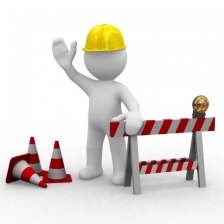 To ensure that lifting operation will be safe and successful, all lifting equipment should be checked and maintained to prevent failure. If the equipment is not inspected, it can lead to serious injuries or fatalities. Due to the number of injuries occurring from poor equipment the Health and safety law have placed obligations on those who provide, control and use the lifting equipment to manage risks and reduce their occurrence. The users of the equipment may have to undertake pre-checks before using any equipment to ensure that they are compliant with using it, also the employers should ensure that before the use of the equipment it is thoroughly examined. Checks are vital to verify that the lifting equipment can continue to be used safely. For the lifting equipment and its accessories to be deemed as safe to use, thorough examinations need to be carried out throughout the equipment’s life time including before it is used for the first time and after assembly. If the equipment is less than a year old, it only has to be tested when it is erected. There are standard procedures and criteria that needs to be met which a competent person will follow when undertaking examinations and making judgements to ensure that the equipment can be continued to be used safely such as functional checks, visual examinations and measurements of wear. Examination schemes don’t need to be preserved in a form of a document, however there needs to be a written copy to show the relevant authority.
To ensure that lifting operation will be safe and successful, all lifting equipment should be checked and maintained to prevent failure. If the equipment is not inspected, it can lead to serious injuries or fatalities. Due to the number of injuries occurring from poor equipment the Health and safety law have placed obligations on those who provide, control and use the lifting equipment to manage risks and reduce their occurrence. The users of the equipment may have to undertake pre-checks before using any equipment to ensure that they are compliant with using it, also the employers should ensure that before the use of the equipment it is thoroughly examined. Checks are vital to verify that the lifting equipment can continue to be used safely. For the lifting equipment and its accessories to be deemed as safe to use, thorough examinations need to be carried out throughout the equipment’s life time including before it is used for the first time and after assembly. If the equipment is less than a year old, it only has to be tested when it is erected. There are standard procedures and criteria that needs to be met which a competent person will follow when undertaking examinations and making judgements to ensure that the equipment can be continued to be used safely such as functional checks, visual examinations and measurements of wear. Examination schemes don’t need to be preserved in a form of a document, however there needs to be a written copy to show the relevant authority.
2: Picture 2
When excavations are being carried out on site, precautions are required to be maintained. A competent person must inspect the support or battering excavation, no work can start unless the excavation is deemed as safe. Before work begins the client must provide the contractor with the relevant information to carry out the excavation such as the ground conditions, the location of existing services and underground structures. Excavations should also be inspected after any event that can affect their strength. A record of inspection will be required along with any faults that are found.
Scaffolds need to be erected to a general recognised standard configuration which is a requirement of the Work at Height Regulations. The scaffold users and hirers have the responsibility to ensure that all of the scaffolding has been inspected before use, subjected to bad weather and at an interval of no more than 7 days thereafter. All scaffold inspections should be carried out by a competent person whose training and knowledge is appropriate for the type and complexity of the scaffold. The scaffold inspection report should note any defects or matters that could give a rise to risk to health and safety and any corrective actions taken.
Accident Book
There needs to be an accident book on any site that has ten or more persons at the same time. Employers and employees can use this book to record details of injuries and near misses on site. The accident book is a vital document that can be used to record accident information as part of their management of health and safety. All details of injuries must be recorded as a requirement under the Reporting of Injuries, Diseases and Dangerous Occurrences Regulations. The law changed on the 6th of April 2012 stating if a worker sustains an injury from an accident and becomes incapacitated for more than seven days it needs to be reported to RIDDOR. The book needs to be available for inspection at all times and should be kept for a minimum of 3 years after the last entry. When reporting injury information details such as the name and address of the person injured, a description of what happened and the date and time of the injury need to be noted.
Induction & Training
An induction is required to help the employee understand the rules and regulations of the site. All employees, workers and visitors must have one before they are allowed on the site. If people are uninformed about the sites activity it may cause a hazard in an event of an emergency. The induction includes information on certain aspects of the site and other information such as site rules, first aid, hazards, waste removal, working hours, facilities and evacuation procedures. Training is a vital element of health and safety. Employees who have the appropriate training and equipment usually result in a workforce with a lower accident rate than a workforce who has not had the appropriate training. Training can take the form of a tool box talk which involves the employees gathering in a meeting area to discuss hazards, control measures and any other high-risk activity on site.
Health & Safety Policy
If an employer has five or more workers they must prepare a health and safety policy. A company’s health and safety policy should demonstrate an ongoing commitment to improve health and safety at work throughout the organisation. The policy should state a company’s intent on the required behaviour and approach it demands between health and safety and 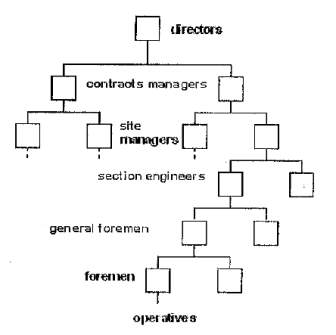 business performances. The policy also must be reviewed and revised regularly and needs to be given to all employees. If the policy is not provided a fine up to £20,000 could be issued in a Magistrates Court. A Health and Safety Policy should consist of a general statement of the works to be carried out, detailed arrangements of procedures and systems and company structure and obligations of employees. General responsibilities of the employer and the employee should be outlined and signed and dated by the person within the company who has the responsibility for health and safety.
business performances. The policy also must be reviewed and revised regularly and needs to be given to all employees. If the policy is not provided a fine up to £20,000 could be issued in a Magistrates Court. A Health and Safety Policy should consist of a general statement of the works to be carried out, detailed arrangements of procedures and systems and company structure and obligations of employees. General responsibilities of the employer and the employee should be outlined and signed and dated by the person within the company who has the responsibility for health and safety.
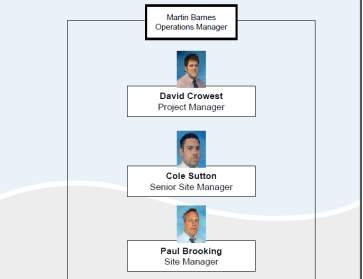 For the health and safety policy to be effective there must be a framework that is clear to all employees. An organisation chart will be used to show the administration for the sites size and complexity and the obligation of the employees. At the company I work for (Mulalley & Co LTD) we have one for the site I’m currently working on showing the operations manager, project manager, senior site manager and the site manager.
For the health and safety policy to be effective there must be a framework that is clear to all employees. An organisation chart will be used to show the administration for the sites size and complexity and the obligation of the employees. At the company I work for (Mulalley & Co LTD) we have one for the site I’m currently working on showing the operations manager, project manager, senior site manager and the site manager.
The policy should also clarify what the chain of command is in terms of health and safety managements, the identity of personnel who are accountable for ensuring arrangements for safe working are drawn up, monitored and implemented, aspects of health and safety each level of employee must manage and the arrangements for employee representation in relation to health and safety.
It is important that health and safety systems are in place in order to deal with hazards and risks related to the nature of works that are carried out. The Health and Safety Policy sets out the practical arrangements that will need to be implemented such as procedures for reporting accidents, fire and emergency evacuation procedures, provisions of welfare, arrangements for first aid, staff training, detailed instructions for operation of plant and equipment and procedures for dealing with subcontractors and visitors to the site. The policy also needs to be in compliance with Regulations including COSHH, manual handling, ‘six pack’ and the noise at work regulations. Appendices can give more detail to specific provisions outlined in the policy; however there is no requirement to add any to a Health and Safety policy.
Employers have an obligation under the Health and Safety at Work Act 1974 to provide training as far as reasonably practical to their employees. Health and Safety training helps improve performance and motivation of employees. Given the proper training it allows the employee to have an understanding on how to perform specific tasks, the reason it is being carried out and the risks and hazards that can occur. The construction and common law have placed a duty on employers to ensure that young persons are adequately trained as they are particularly vulnerable in the build environment as they have come from school or college.
CSCS Cards
The CSCS card scheme covers more than 220 occupations which includes management and supervision. The card will prove that the holder is competent enough in their work and has the health and safety awareness required to work on site. The card is used widely across construction sites; workers who do not carry one will not be allowed to work on site.
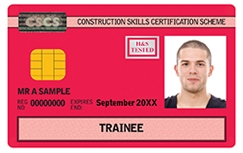 CSCS is a voluntary registration scheme whereby trainees, workers, managers, supervisors, visiting professional etc., can obtain the relevant colour card which enables them to gain access to Major Contractors Group sites. (Cooke and Williams, 2009). A health and safety awareness test must be completed and passed in order to obtain the card. There are different types of card for each operative to match their roles such as apprentice, labourer, manager, experienced worker, trainee, skilled worker, advanced craft, technical supervisor and supervisory. All CSCS Card are valid for 5 years.
CSCS is a voluntary registration scheme whereby trainees, workers, managers, supervisors, visiting professional etc., can obtain the relevant colour card which enables them to gain access to Major Contractors Group sites. (Cooke and Williams, 2009). A health and safety awareness test must be completed and passed in order to obtain the card. There are different types of card for each operative to match their roles such as apprentice, labourer, manager, experienced worker, trainee, skilled worker, advanced craft, technical supervisor and supervisory. All CSCS Card are valid for 5 years.
3: Picture 3
Work Permits
A permit to work is a document that is issued by a person who is in charge of a particular work area. The permit will detail who is working in the area and will list any precautions that will need to be taken. It also must note if there is any isolation of services that maybe required. The permits are used to safely control certain activities on large projects and sites. Sites with several levels and floors may require the permit to list the different trades and all the people that are working in a particular area, in order for the supervisors to plan safely. Hot work permits are a means of being able to keep track of construction activities that will involve hot works and that they are being conducted safely. Hot work permits cover works such as welding, cutting and grinding; before hot works can be carried out the supervisor must check to see if anyone is scheduled to work in the same area at the same time, if that is the case the works will have to be rearranged if possible. Welders should check that no one is working on the floors below them before they st art any works to avoid accidents. The permit also allows the supervisor to be aware of what isolation will be required, when the work will be finished and what safety measures will be required. Permits are usually used for working on roofs, confined spaces, sewer works, gas installations and electrical installations. Some permits require the operative who is carrying out the works to sign the permit, which allows the supervisor to know who is working on site in an event of an emergency. The permit will show a list of the control measures that will need to be in place before the permit can be authorised. The permit must be signed of at the end of the day by all who have been working on it so that the supervisor knows that the works have been completed. For a permit to be issued a risk assessment and a method statement need to have been carried out to highlight the hazards and the control measures needed to reduce risk.
Crane
The law requires that all lifting operations that involve lifting equipment must be planned out by a competent person, appropriately supervised and carried out in a safe manner. Cranes and its lifting accessories must be tested, adequately strong and examined and inspected. All persons who operate the crane and who are involved in the slinging loads and direct lifting operations must be trained and competent enough to do so. Cranes hold two main hazards on construction site; the falling of load and the collapse of the crane, both have significant potential for fatal injuries. When a crane is hired out the responsibility for the safe lifting operations is shared between the crane hirer and the crane user. Employers are responsible for ensuring the certification and qualifications of any operator that is on their site. Employers also have the responsibility to provide the certification at no extra cost to the operator. CITB offer courses for the required training for Tower cranes and mobile cranes which cover how to operate the crane safely, recognise signals for controlling the crane, carry out minor adjustments and understand the capabilities of the equipment and any relevant safety precautions. Upon successful completion of the course the operative will be entitled to receive a CPCS Red Trained Operator Card.
Fork Lifts
A forklift driver loads and unloads goods on site. Their main duties include moving, stacking and checking goods whilst performing daily equipment checks. The operative must complete an approved forklift training course before they can use the truck which will be provided by their employer. The training will be composed of formal, practical and evaluation stages to be awarded the certification. The formal element consists of classroom training, the practical component consists of hands-on skill-building and finally the evaluation process consists of being evaluated by a trainer and if successful the operative will take a final test which if successful will lead to certification.
Task 2.2:
Under the Health and Safety at Work Act 1974 the employer is required to provide information, training, instruction and supervision necessary to ensure the health and safety of their employees as far as reasonably practical. The employers are required to consider the employees abilities to perform allocated tasks and provide the appropriate training when the employee first starts at a company, when they are given new tasks to carry out, when they have to employ new working practices and when they have to use new plant or materials. Training should be provided in working hours and should be given to permanent 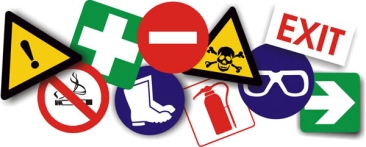 and temporary staff. Motivation and performance of employees improves when carrying out health and safety training. The training help the employee understand how to perform specific tasks, the hazards and risks involved and the reason it is being carried out. The law and construction legislation requires the employers to ensure that young workers are adequately trained. Young people who have just left school or college are particularly vulnerable when entering a new and different environment from what they have been in at school or college.
and temporary staff. Motivation and performance of employees improves when carrying out health and safety training. The training help the employee understand how to perform specific tasks, the hazards and risks involved and the reason it is being carried out. The law and construction legislation requires the employers to ensure that young workers are adequately trained. Young people who have just left school or college are particularly vulnerable when entering a new and different environment from what they have been in at school or college.
4: Picture 4
The range of training can vary due to the size and type of the company and the potential hazards that can arise from the work being carried out. Employees all have different levels within a company; there are many types of training to meet their various levels such as vocational training, academic training and accredited qualifications by NEBOSH. When training is given to employees a training plan and programme must be in place to state the objectives of providing the different types of planning. The training that is carried out should be at the appropriate level of the course that is being given. There are different types of training such as induction training, management training, supervisor training and training for employees.
Induction Training
All new employees must have an induction; the induction will include a tour of the site, fire and emergency evacuation procedures, introduction of the company’s health and safety policy, details of specific hazards on site and permit to work procedures.
Management Training
Managers should receive training on Health and Safety Legislations, cost benefits analysis of accident prevention, risk management systems, safety procedures and audits, monitoring and revising safety plans and policies and motivation of staff relating to safety.
Supervisor Training
Supervisors require training for certain procedures such as common law duties of care, health and safety law and regulations, hazard identification, methods of risk assessment, accident reporting and investigations, inspection procedures and fire precautions.
Employee Training
All employees require training so that they are aware of site risks. Training can include how to identify a hazard, what to do when an accident occurs, how to maintain PPE, emergency procedures and fire procedures.
Under the Health and Safety at Work Act 1997 the employers have to carry out risk assessments of task that are carried out by young workers before they start the task. Employers must take into account that young workers usually have no experience working with the equipment and machinery and no experience in identifying hazards. The work place will be a total different experience that they have experienced at school or college. Under common law and construction legislation the employer must ensure that young persons are appropriately and accurately trained. Supervision of young employees is vital especially when they first start on site. The sufficient supervision must be in place to correct or prevent any poor working habits that arise. The young employee must not fool around or play practical jokes in the workplace. If they are ever in doubt what to do they should ask their supervisor for instructions.
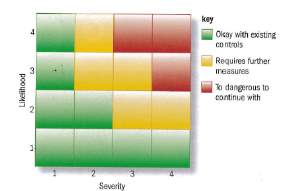 Services – steel pipe worker
Services – steel pipe workerHazard identification tools are used to identify hazards and the controls required for a specific task. Part of the risk assessment process needs to assess the harm that could come from a hazard. Risks are rated by their likelihood that the hazard will cause harm and where it will occur. Severity and likelihood are rated from a scale from 1 to 4 you then multiply the likelihood by the severity to work out the potential risk.
You have to be 100% sure of the quality of your product to give a money-back guarantee. This describes us perfectly. Make sure that this guarantee is totally transparent.
Read moreEach paper is composed from scratch, according to your instructions. It is then checked by our plagiarism-detection software. There is no gap where plagiarism could squeeze in.
Read moreThanks to our free revisions, there is no way for you to be unsatisfied. We will work on your paper until you are completely happy with the result.
Read moreYour email is safe, as we store it according to international data protection rules. Your bank details are secure, as we use only reliable payment systems.
Read moreBy sending us your money, you buy the service we provide. Check out our terms and conditions if you prefer business talks to be laid out in official language.
Read more